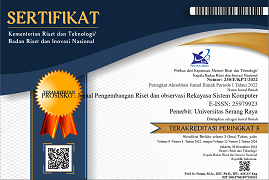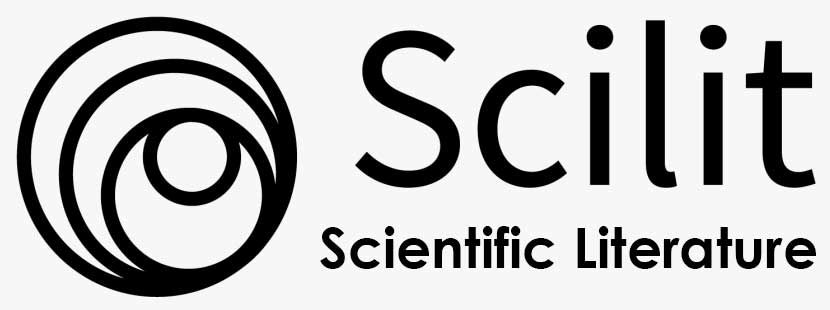USULAN PENERAPAN TPM DALAM RANGKA PENINGKATAN EFEKTIFITAS MESIN DENGAN OEE SEBAGAI ALAT UKUR DI PT XYZ
Abstract
Persaingan di industri kemasan kaleng saat ini sangat ketat sehingga setiap industri harus meningkatkan efektifitas mesin untuk dapat bertahan, bersaing dan menguasai pasar. Tujuan penelitian ini adalah menghitung tingkat efektifitas mesin, faktor-faktor penyebab rendahnya efektifitas, akar masalah yang dihadapi dan usulan penyelesaian  yang berhubungan dengan perawatan mesin di PT XYZ. Pendekatan yang digunakan untuk menyelesaikan permasalahan adalah Total Productive Maintenance. Total Productive Maintenance adalah salah satu unsur manufakturing yang bertujuan meningkatkan efektifitas mesin. Indikator utama TPM adalah Overall Equipment Effectiveness. Hasil perhitungan OEE dalam penelitian ini adalah 65,43%. Analisa Six big losses yang dominan dengan menggunakan pareto diagram adalah setup and adjustment losses sebesar 62,84% dan reduced speed losses sebesar 29,18%. Untuk mencari akar permasalahan menggunakan teknik 5 way dan selanjutnya digambarkan dengan cause and effect diagram. Permasalahan yang dihadapi oleh PT XYZ adalah faktor pemeliharaan mesin. Pelaksanaan Autonomous Maintenance dan Focused Improvement diharapkan dapat menyelesaikan masalah tersebut dan meningkatkan efektivitas mesin.References
Ahmed,T., Ali, S.M., Allama, M.M, & Parvez, M.S. (2010). A Total Productive Maintenance (TPM) Approach to Improve Production Efficiency and Development of Loss Structure in a Pharmaceutical Industry. Global Journal of Management and Business Research, Vol. 10, Issue 2 (Ver 1.0), 186-190.
Ahuja, I.P.S., & Khamba, J.S. (2008). Total Productice Maintenance, literature review and direction. International journal of Quality and Reliability Management, Vol 25, No. 7, 709-756.
Almeanazel, O.T. (2010). Total Productive Maintenance Review and Overall Equipment Effectiveness Measurement. Jordan Journal of Mechanical and Industrial Engineering, Vol. 4, No. 4, 517-522.
Borris, S. (2006). Total Productive Maintenance. New York : McGraw-Hill
Dogra, M., Sharna, V.S., Sachdeva, A., & Dureja, J.S. (2011). Journal of Engineering Science and Technology, Vol. 6, No. 1, 1-16.
Goetcsh, D., & Davis, S. (2013). Quality Management for Organizational Excellence, edisi 7. USA : Pearson Education, Inc.
Hegde, H.G., Mahesh, N.S., & Doss, K. (2009). Overall Equipment Effectiveness Improvement by TPM and 5S Techniques in a CNC Machine Shop.Sastech , Vol. 8, Issue 2, 25-32.
Imani T.W., Priyanta D.M., Gurning R.O.S, (2010). Implementasi Total productive Maintenance dengan Metode Overall Equipment Effectiveness (OEE) untuk Menentukan Maintenance Strategy pada Mesin Tube Mill 303, Department of Marine Engineering, ITS-Undergraduate, Surabaya.
Heizer, J & Render, B. (2008). Operation Management, edisi 9. New Jersey : Pearson Education, Inc.
Kennedy, R. (2006). Examinizing the Processes of RCM and TPM.The Centre for TPM (Australia). Retrieved from http://www.ctpm.org.au.
Kumar, R.S. (2010). Application of Total Productive Maintenance (TPM) in the spinning mill. Practical Hints, PTJ July 2010, 40-41.
Nakajima, S, (1988). Introduction to TPM . Cambridge: Productivity Press, Inc.
Norddin, K.H., & Saman, M.Z.M. (2012). Implementation of Total Productive Maintenance Concept in a Fertilizer Process Plant. Jurnal Makanikal, No. 32, 66-82.
Ottosan, D (2009), The Initiation of Total Productive Maintenance to a pilot production line in the German automobile industry. Master’s Thesis, Department of Applied Physics and Mechanical Engineering, Lulea University of Technology. German.
Scodanibbio, C. (2009). World-Class TPM – How to calculate Overall Euqipment Effectiveness (OEE). Retrieved from http://www.scodanibbio.com.
Shahanaghi, K., & Yazdian, S.A. (2009). Analyzing the effect of implementation of Total Productive Maintenance (TPM) in the manufacturing companies : asystem dynamics approach. World Journal of Modelling and Simulation, Vol. 5, No. 2, 120-129.
Sharma, R.K., & Kumar, P. (2006). Manufacturing Excellence through TPM implementation : a practical analysis. Industrial Management & Data System. Vol. 106, No.2 , 256-280.
Sivakumar, D., Sapuan, S.M., Ismail, N., & Ismail, M.Y. (2012). Application of Total Productive Maintenance to Reduce Non-Stick on Pad Problemin IC Packaging, International Journal of Engineering and Science, Vol. 3, No.1, 1-19
Sugiyono. (2007). Metode peneltitian Bisnis. Bandug : Alfabeta, CV.
Teeravaraprug, J., Kitiwanrong, K., & Tong, N.S. (2011). Relationship model and supporting activities of JIT, TQM and TPM. Songklanakarin Journal of Science and Technology, 33 (1), 101-106.
Tika, M.P. (2006). Metodologi Riset Bisnis. Jakarta : Bumi Akasa, PT.
Wakjira, M.W., & Singh, A.P.(2012). Total Productive Maintenance : A case study in Manufacturing Industry. Global Journal of Researches in Engineering, Industrial Engineering, Vol. 12, Issue 1 Version 1.0, 25-32
Wilson, A. (2002). Asset Maintenance management. New York : Industrial Press, Inc.
Wireman, T. (2003). Benchmarking best practice in maintenance management. New York : Industrial Press, Inc.
Wireman, T. (2005). Developing Performance Indicators for Managing maintenance. New York : Industrial Press, Inc.















